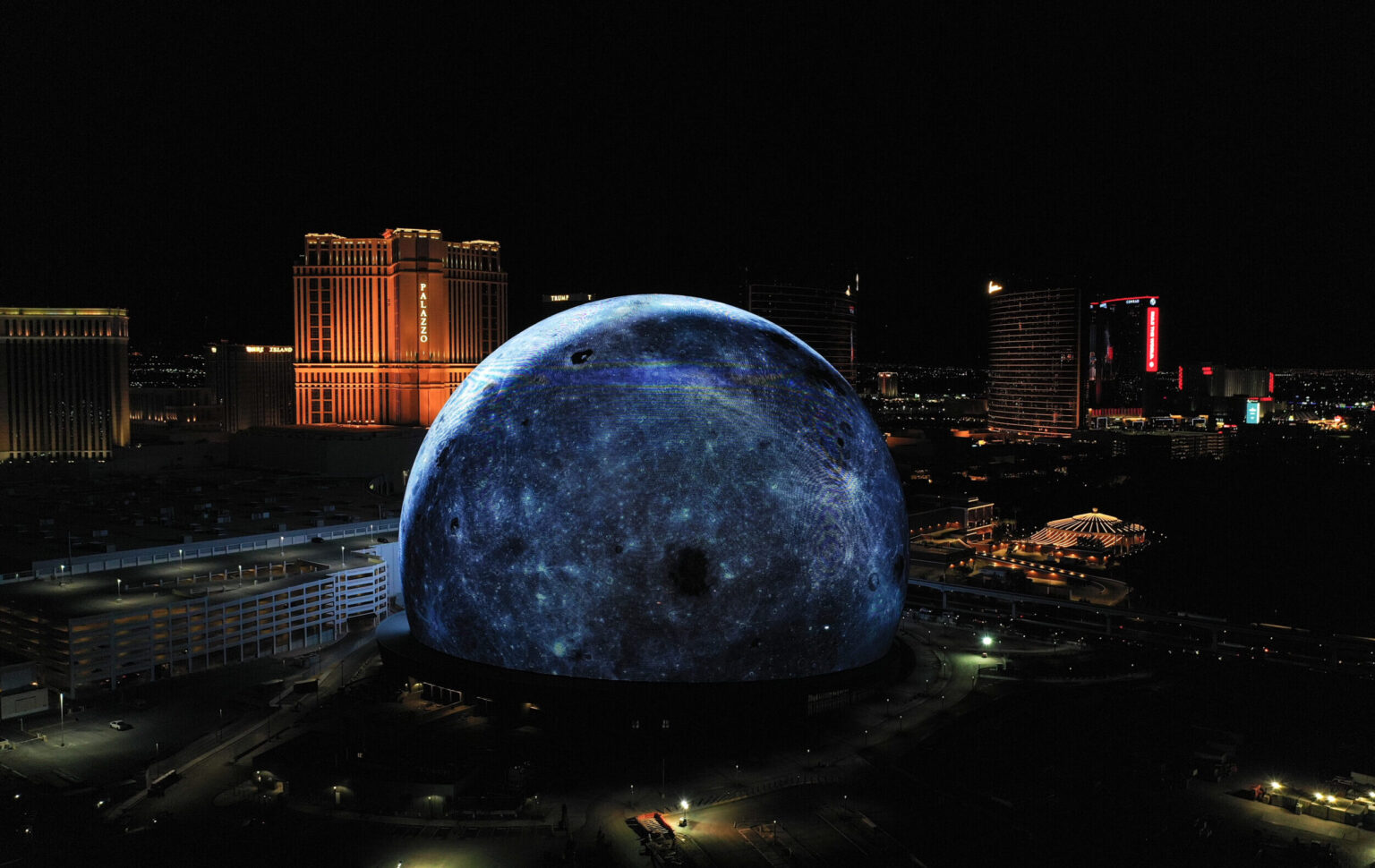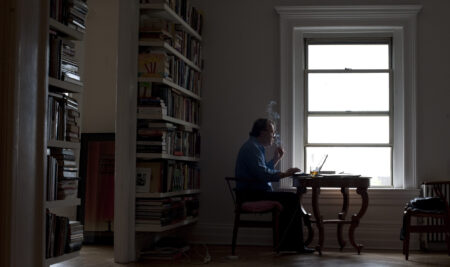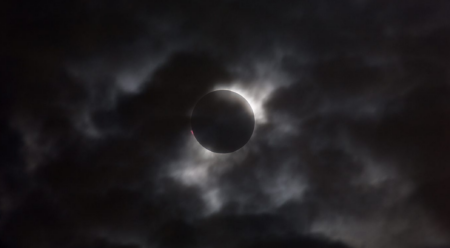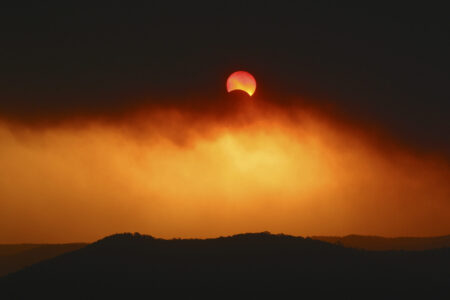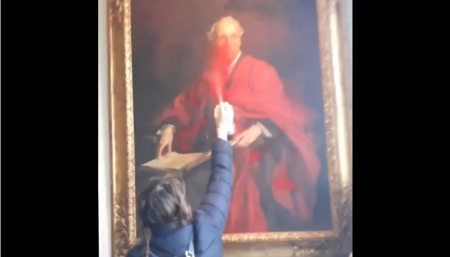I thought America was out of ideas. I thought our best days were behind us. And then I saw the video of the newly built Sphere in Las Vegas set against Independence Day fireworks as “Viva Las Vegas” blared.
Am I saying this tongue-in-cheek? I honestly don’t know. And I suspect if the creators of the $2.3 billion sports and entertainment arena—billed as the largest spherical structure in the world and coated in LEDs—learn of my confusion, they will high-five each other. Set against the background of the Vegas Strip, the LEDs light up in images of snow globes, the planet Earth, a tired eye, a basketball, and so forth, soliciting emotions ranging from awe to terror and back to awe again. It is primal, novel, extravagantly expensive and very, very American.
In 1925, Russian Futurist poet Vladimir Mayakovsky visited the United States on a journalism assignment. Mayakovsky was a communist, but his ideological biases did not prevent him from leaving impressed with America’s industrial might, which he saw perfectly embodied in the architecture of the Brooklyn Bridge. The poet described being overcome with a sense of veneration at the site of the construction:
Like a maddened
believer goes
to church
or retreats
to a monastery
strict and simple —
so do I,
in the graying
evening dusk,
humbly
walk on
the Brooklyn Bridge.
(The translation is my own.)
It is not that the atheist Mayakovsky projected quasi-religious sensation into the mundane, but that the bridge’s pointed arches deliberately resembled those of medieval architecture. The early skyscrapers, too, were adorned with neo-Gothic details, and many of the later ones were designed as a nod to medievalism—for instance, the bases of the ill-fated Twin Towers were shaped like cathedral vaults. Europe’s great cathedrals were contrived to reach towards the heavens, so the architectural elements like vaults and flying buttresses were very functional. Designers in the 20th century used the same engineering principles to pack office space vertically to maximize investment in real estate. In both cases, purpose and form joined forces.
Mayokovsky was inspired by the raw power of the bridge:
I’m proud
of this
steel mile.
My visions
came alive in it –
the fight
for constructions
instead of styles,
the harsh calculation
of gears
and steel.
The Brooklyn Bridge was opened in 1883; by the time Mayakovsky set his eyes on it, it was already nearly half a century old. But to the Russian poet, the streamlined structure framed by suspension cables represented a radical break with the past. The poet hailed the “steel mile,” despite the characteristic stone neo-Gothic arches. All-steel suspension bridges, like San Francisco’s Golden Gate, weren’t built until the following decade. Mayakovsky would have been even more proud of that bridge—its red spears piercing layers of fog, a testimony to human daring.
Futurism might have been an art movement in Europe, but in America, it is a way of life. From the onset of the Great Depression, when the Art Deco masterpiece nonpareil, the Chrysler Building, was erected in Manhattan, through the decade following the end of the Cold War, the tallest buildings in the world were American. We were a young and assertive nation.
But three years before 9/11, the Malaysian Petronas Tower overtook Chicago’s Sears Tower. Since then the tallest buildings have been erected in Asia; the current champion is the 829-meters tall Burj Khalifa in the United Arab Emirates.
The U.S. lost its nerve and turned inward. With borders wide open and a sclerotic, oversized federal government, the dynamism of the private sector has been reduced to a whimper. Masculine temples of capitalism are not something to celebrate in the age of #MeToo. Besides, we’ve already been to the moon and our cities (except for Oakland) have already developed distinct skylines—what else is there to do?
Or maybe we lost some of the know-how. Look at San Francisco’s fifty-eight-floor landmark Millennium Tower, completed in 2009, which is sinking and leaning to the side.
Yet there is another kind of futurist or, perhaps more properly, science-fiction aesthetic. It also comes as a basic shape and a primal idea. It is round like the roof of a planetarium or the Death Star. In the ’70s in particular, along with some of the most undistinguished skyscrapers, a number of undistinguished domes were built around the country. Today, most of these look hopelessly outdated. The idea behind them was yet to reach its perfection.
A dome is physically the opposite of the skyscraper; it is the dot under the exclamation point. Instead of yearning for God, it sits there, low and feminine. Whereas elongated objects are best used to defy gravity by trading energy for speed, spherical objects minimize circumference area relative to mass to conserve energy at rest.
The Sphere doesn’t project its will, leaving one gaping in awe of what is possible. Instead, UFO-like, it sucks in our fantasies and brings them to life. Like a skyscraper, the Sphere is a very dumb idea that is absolutely brilliant.
This is not because Sin City visitors ingest all sorts of legal, illegal, and semi-legal substances, and their intoxicated visions of a giant eyeball resting in a parking lot in the desert might be the best experience Hunter S. Thompson never had. In Vegas, no drug is necessary to be unwell. Among flashing lights, loud jingling sounds, hotel rooms pumped with oxygen, and the arid air, even a sober man can start hallucinating. Vegas is a “trippy” town.
I thought I was done with Vegas. I’ve been there too many times visiting family, and on our last trip I was relieved to go hiking in Red Rock Canyon. But then I saw that picture of Sphere and I knew I would be back.
Read the full article here





